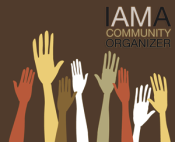Saturday, 27 October 2007
Treatment, Punishment and Extreme Color-Aroused Disorder
What should happen when police officers engage in unlawful color-aroused behavior? Mental health treatment for these officers and jail time are really independent issues, although the risk of facing jail time often causes people to seek treatment before their illnesses get so bad that they commit crimes, if diagnosis and treatment are available.
Extreme Color-Aroused Disorder is a new conceptual way of describing a problem with which we are all familiar. Although the conceptual approach is novel, I think it's pretty obvious that when some police see the skin color of some members of the public, they react differently based on skin color. When they perceive the skin color of others, the perpetrators' color-aroused ideation and emotions commences, which then are often manifested in color-aroused behavior. That's obvious, isn't it?
The goal of cognitive behavioral therapy is to help people to become more aware of their ideation, to reality test their ideation, and to determine whether that ideation really is conducive to functional and happy relationships with others. When people's behavior is destructive to themselves and others, cognitive behavioral therapy is often a very effective way of changing that destructive behavior.
This is a new way of approaching the problem we are looking at here, but only because we have assumed that nothing at all can or should be done about the ideation that leads to abusive police behavior and abusive behavior by others with extreme color-aroused disorder.
It is discriminatory to insist, as you do, that no screening, diagnosis or treatment should be offered to address the ideation, emotion and behavior of those who commit color-aroused offenses. It would be equally discriminatory to insist that alcoholics should be punished for illegal alcoholic behavior but not diagnosed and treated for alcoholism.
Extreme Color-Aroused Disorder is a new conceptual way of describing a problem with which we are all familiar. Although the conceptual approach is novel, I think it's pretty obvious that when some police see the skin color of some members of the public, they react differently based on skin color. When they perceive the skin color of others, the perpetrators' color-aroused ideation and emotions commences, which then are often manifested in color-aroused behavior. That's obvious, isn't it?
The goal of cognitive behavioral therapy is to help people to become more aware of their ideation, to reality test their ideation, and to determine whether that ideation really is conducive to functional and happy relationships with others. When people's behavior is destructive to themselves and others, cognitive behavioral therapy is often a very effective way of changing that destructive behavior.
This is a new way of approaching the problem we are looking at here, but only because we have assumed that nothing at all can or should be done about the ideation that leads to abusive police behavior and abusive behavior by others with extreme color-aroused disorder.
It is discriminatory to insist, as you do, that no screening, diagnosis or treatment should be offered to address the ideation, emotion and behavior of those who commit color-aroused offenses. It would be equally discriminatory to insist that alcoholics should be punished for illegal alcoholic behavior but not diagnosed and treated for alcoholism.
Subscribe to:
Post Comments (Atom)



No comments:
Post a Comment